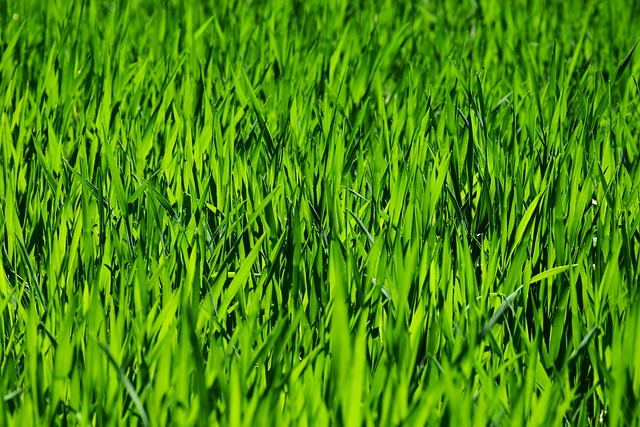Mastering Lawn Care and Landscaping: A Guide to Fundamental Turf Management and Soil Health
Effective lawn care and landscaping hinge on a thorough understanding of turf management principles, which are critical for maintaining healthy, resilient grass and attractive outdoor spaces. Key to this is understanding soil composition, includ…….

Effective lawn care and landscaping hinge on a thorough understanding of turf management principles, which are critical for maintaining healthy, resilient grass and attractive outdoor spaces. Key to this is understanding soil composition, including pH levels and nutrient needs specific to the turf species, which informs successful fertilization, irrigation, and aeration tailored to local climate and seasonal changes. Regular monitoring and maintenance against grass diseases and pests are essential for their prevention and damage control. Mowing at the correct height not only maintains a lawn's appearance but also promotes its health and density, enhancing its ability to withstand environmental stressors. A proactive approach to lawn care includes strategic herbicide use and the incorporation of organic matter to enrich soil fertility. Knowledge of turfgrass life cycles and environmental interactions is crucial for a comprehensive year-round lawn care program that addresses the lawn's varied needs throughout its growth stages and in different weather conditions. By following these practices, individuals can ensure their lawns remain lush and healthy, while professionals can deliver high-quality lawn care and landscaping services that fulfill both aesthetic and ecological objectives. Soil health is central to this process, with the right pH balance, drainage, and microbial support being key to not just a beautiful lawn but also a robust ecological environment within the landscape.
Embarking on the journey of turf management is both an art and a science, requiring a blend of expertise and dedication to cultivate a lush, resilient lawn. This comprehensive guide delves into the essential aspects of lawn care and landscaping, offering insights from understanding the fundamentals to embracing innovative practices in turf maintenance. Whether you’re a seasoned lawn care professional or a homeowner passionate about your greenspace, this article provides valuable knowledge on soil health, aeration techniques, fertilization, integrated pest management, and more. Learn how to optimize your irrigation systems, master the art of mowing, and select the best grass type for your landscape. Explore the benefits of organic practices, the influence of climate, and the role of compost in nurturing a thriving lawn. With actionable tips for seasonal maintenance and troubleshooting compacted soil, this guide is your compass to achieving year-round lawn care excellence. Dive into the future of turf management with trends and predictions that will keep your lawn at its best.
Understanding the Fundamentals of Turf Management

Engaging in lawn care and landscaping requires a solid grasp of the fundamentals of turf management, which is pivotal for maintaining healthy, resilient grass and beautiful landscapes. At the heart of successful turf management lies a comprehensive understanding of soil composition, pH levels, and the specific nutrient needs of the turf species present. Proper soil analysis allows for informed decisions regarding fertilization, irrigation, and aeration practices that are tailored to the local climate and seasonal changes. Additionally, the identification and management of common turf grass diseases and pests is crucial for preventing their spread and minimizing damage. Effective turf management strategies also involve regular mowing at optimal heights, as this can influence grass health and density, contributing to a lush, vibrant lawn that withstands environmental stressors.
Maintaining a well-groomed landscape goes beyond mere aesthetics; it involves a proactive approach to lawn care and landscaping that includes the timely application of appropriate herbicides for weed control, as well as the strategic use of organic materials to enhance soil quality. Understanding the life cycle of turfgrasses and how they interact with their environment is essential for developing a year-round care plan. This plan should address the specific needs at different growth stages and environmental conditions, ensuring that the lawn remains a thriving ecosystem throughout the year. By integrating these practices into turf management, professionals and enthusiasts alike can achieve and sustain beautiful, healthy landscapes that stand the test of time.
The Role of Soil Health in a Thriving Lawn

A thriving lawn is a reflection of meticulous lawn care practices, with soil health playing a pivotal role in its vitality. The foundational aspect of lawn management is understanding and nurturing the soil beneath the turfgrass. Healthy soil serves as a rich medium for grass roots to absorb nutrients and water, facilitating robust growth and resilience against environmental stressors. Landscaping professionals emphasize the importance of maintaining optimal soil pH levels, ensuring good drainage, and encouraging a diverse microbial community. These practices not only foster a lush, green lawn but also contribute to the overall ecological health of the landscape. Regular aeration, combined with the application of organic matter, helps to alleviate soil compaction, allowing air and water to reach the roots more efficiently. Additionally, incorporating a well-balanced fertilization program tailored to local soil types and grass varieties can provide the necessary nutrients for optimal lawn performance. Landscaping experts with expertise in turf management recognize that a holistic approach to lawn care, centered around soil health, is essential for achieving and sustaining a beautiful, healthy lawn.
Effective lawn care and landscaping hinge on mastering the fundamentals of turf management. This article has illuminated the critical role of soil health in nurturing a resilient and vibrant lawn, offering insights for those passionate about maintaining picturesque green spaces. By applying the knowledge from understanding the basics to recognizing the importance of soil vitality, homeowners and professionals alike can achieve and sustain healthy turf. A well-managed lawn not only elevates the aesthetic appeal of any property but also fosters environmental benefits, serving as a testament to the skillful application of turf management principles.







